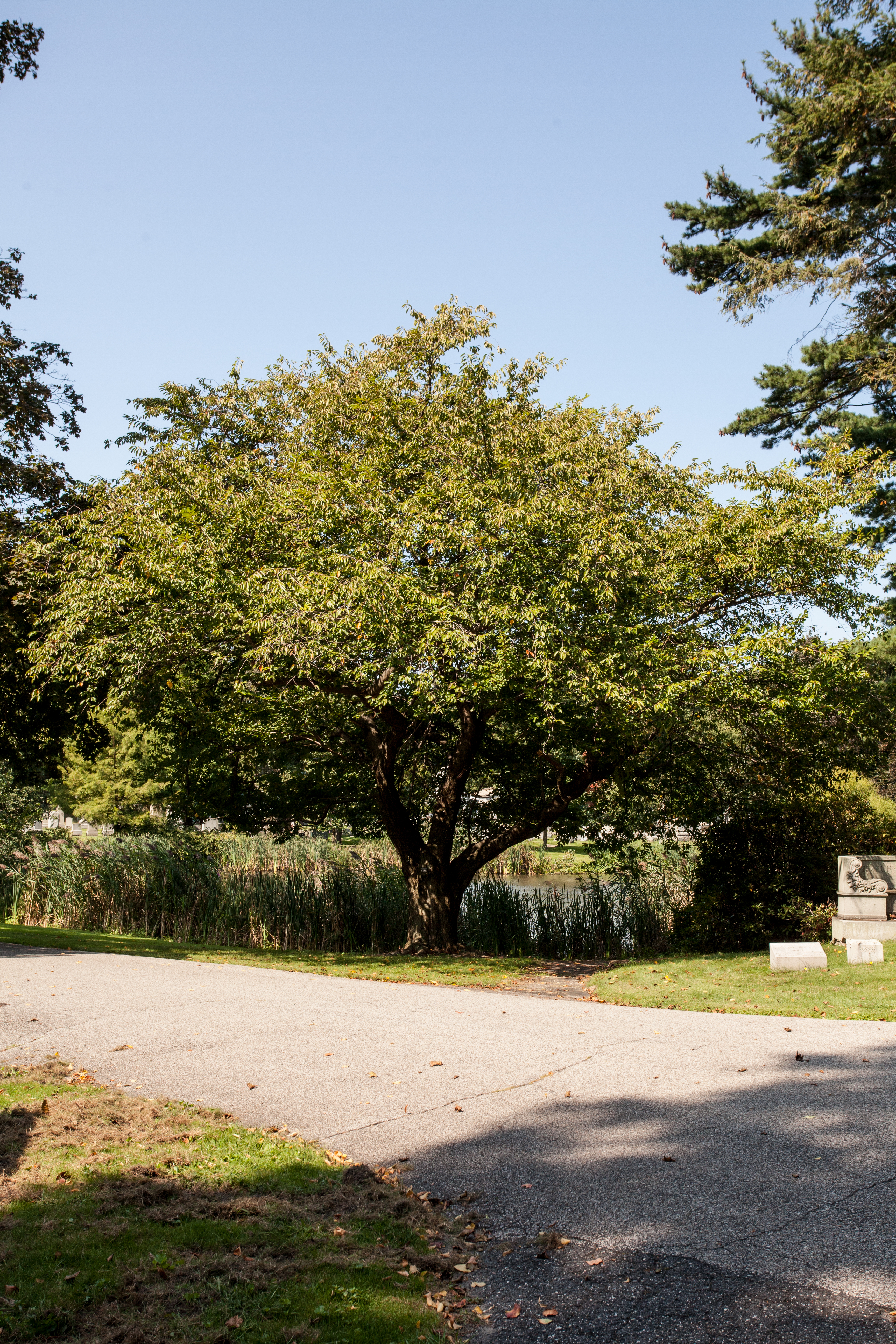PRUNUS SERRULATA – CHERRY, JAPANESE FLOWERING

The species is rarely seen in cultivation. The market is dominated by the cultivars. Oriental cherry grows 15 to 25 feet tall and flower color varies with cultivar from white, pink, or yellow. Some cultivars have good fall color while others have useful growth habits. None of the cultivars bear fruit and all are troubled with pests. Oriental cherry prefers full sun, is intolerant of poor drainage, and is easily transplanted. However, useful life of the species is limited to about 15 years, perhaps 25 years for `Kwanzan’.
A regular fertilization program with slow release nitrogen is recommended to keep plants vigorous. Too much nitrogen in the soluble form could stimulate sprouting. Plants perform best on north facing slopes in the Rocky Mountain region. This plant is considered mostly allergy free and causes little or no allergy problems in most people. Foliage from most members of this genus is considered poisonous when ingested. Cherries compartmentalize decay poorly meaning that decay can spread rapidly inside the tree following mechanical injury to the trunk or removing large branches.
This plant resists Japanese beetles but some damage can be expected.

